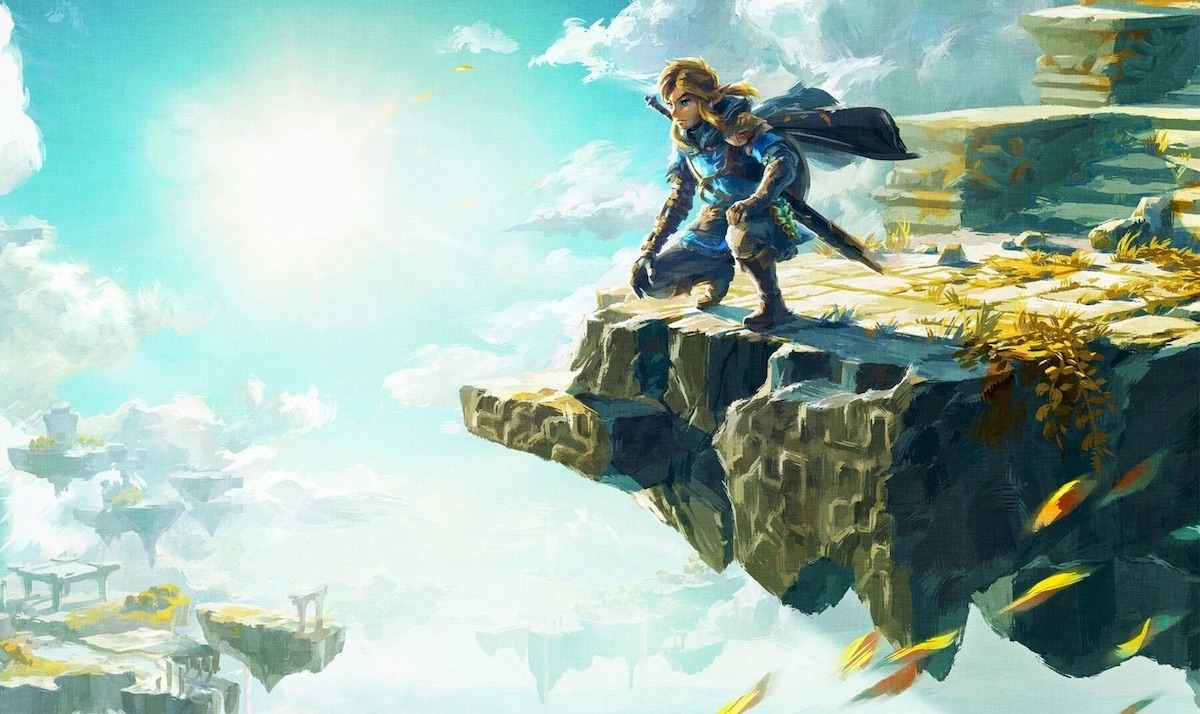Where Does ‘Tears of the Kingdom’ Fit on ‘The Legend of Zelda’ Timeline?

Since it was first announced during Nintendo’s 2019 E3 Direct (alas, RIP), there has been a lot of mystery around the Legend of Zelda‘s successor to Breath of the Wild. Nintendo has kept details about the game quite close to the chest. Hell, they have yet to acknowledge what is obviously Skyloft floating prominently in the background of gameplay as such. Still, in a franchise known for his wonky timeline, the word “sequel” here is quite explosive and could mean a lot of things. So, is Tears of the Kingdom really a sequel?! What does that even mean?
That first 2019 teaser introduced what we know now as Tears of the Kingdom as “the sequel to Breath of the Wild.” Out of laziness and lack of a better shorthand, fans and journalists alike referred to the game as “Breath of the Wild 2” until the official subtitle was finally revealed in September 2022. So yes, Tears of the Kingdom is a direct sequel to Breath of the Wild.
We’re dealing with the same Link and the same Zelda. During Aonuma’s gameplay video, we even see the incredibly familiar sight of Dueling Peaks Stable, just as we all remember it. But we don’t yet know how much time has elapsed between the two games. (At least enough for Zelda to get a cute new haircut. Get it, girl!)
Are all Zelda games sequels?
As a giddy Zelda-ologist, this is one of my favorite questions. Because the answer is, technically, yes. All Zelda games exist on the same timeline. However, the order of the games’ release doesn’t correspond in any way with how they’re ordered on the timeline. The earliest entry and “point of origin” for the series’ story is 2011’s Skyward Sword. Later, during Ocarina of Time (1998), the timeline splits into three due to Link’s time-traveling shenanigans. Don’t worry about that right now.
At this point, you might be asking: Why are all these different people named “Link” and “Zelda” if some of them live hundreds, if not thousands, of years apart? Well, “Link” is a very popular name because so many famous heroes were named Link. And “Zelda” is a passed-down name in the royal family. Of course! (The Zelda timeline is an exercise in imagination and forgiveness.)
Breath of the Wild and Tears of the Kingdom have yet to be placed on the official timeline. But most fans think they come at the very end, perhaps so far in the future that they once again unite the three disparate branches.
Okay, but Tears of the Kingdom is a direct sequel?
All that said, there are very few games which are “direct sequels” to each other. “Direct sequel” here meaning that the same Link is the protagonist in all of them. Besides Breath of the Wild and Tears of the Kingdom, there are three other sets of direct sequels among all the Zelda games. Explicitly, Ocarina of Time‘s Link goes back to relive his childhood properly, which spawns the events of Majora’s Mask. Also explicitly, the Link and Zelda/Tetra from Wind Waker venture on to Phantom Hourglass. Implicitly, A Link to the Past‘s Link goes to sea on a journey of self-discovery, gets shipwrecked, and voilá—Link’s Awakening.
By the way, there’s also a pretty hefty (and dark) inference that Twilight Princess‘s “Hero’s Spirit” is the Link from Ocarina of Time and Majora’s Mask—only dead and deeply disillusioned. Which would make Twilight‘s Link his grandson. Or something. Similarly, but less darkly, Spirit Tracks takes place 100 years after Phantom Hourglass, and its Zelda is a direct descendent of Tetra’s.
But there’s a very notable difference between Breath of the Wild / Tears of the Kingdom and the other sets of direct sequels. In Majora’s Mask, Link’s Awakening, and Phantom Hourglass, the Link from the previous game ventures off to another land. Neither game sees Link return to a map he already traversed—i.e., Hyrule. And none of the sequels features some incarnation of Ganon/Ganondorf again. Hell, Majora’s Mask and Link’s Awakening don’t event have Zelda in them.
Tears of the Kingdom really distinguishes itself on that front. Like Phantom Hourglass, Zelda is once again a central figure in the game (even if she falls into oblivion during the first act). But unlike any of the three other sequels, Calamity Ganon has given way to a mummified Ganondorf, from which Calamity Ganon sprang in the first place. And we have access to Hyrule once again—we’re simply adding the sky. And caverns beneath the earth.
In other words, Tears of the Kingdom is particularly exciting because it’s the most direct sequel the Legend of Zelda series has ever offered, in over three decades of existence. By putting us all in familiar Hyrule territory once again, the series is trying out something completely new.
(featured image: Nintendo)
Have a tip we should know? tips@themarysue.com